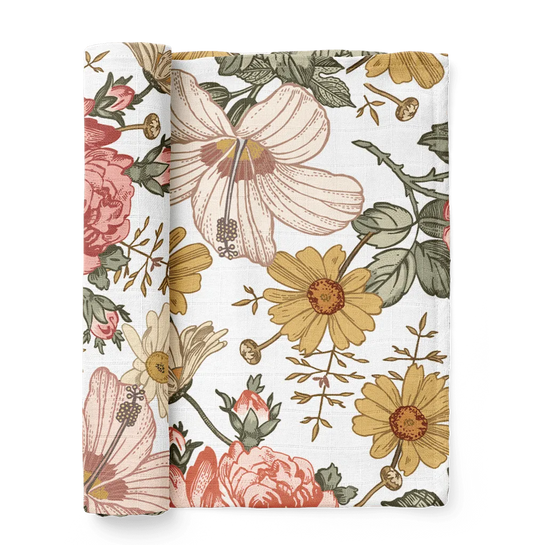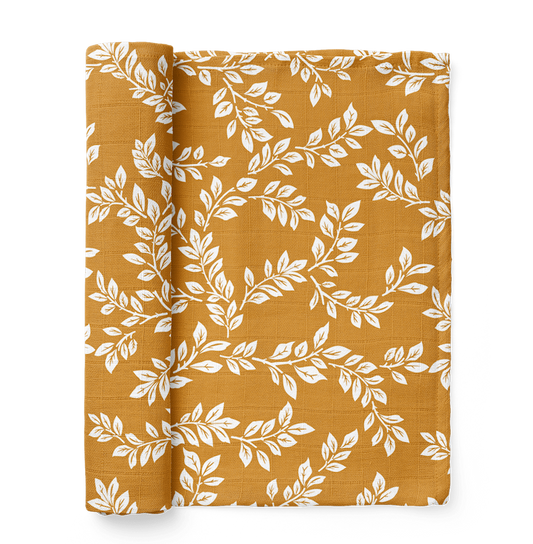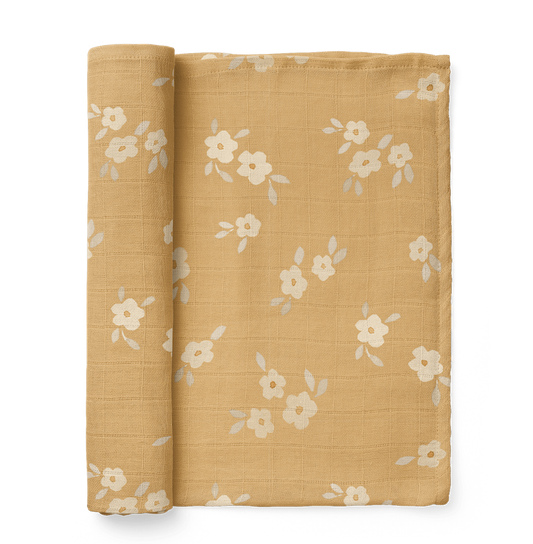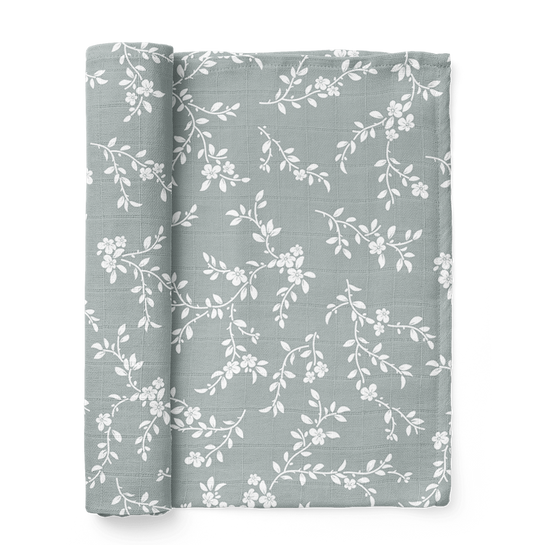Parents have been swaddling their babies for centuries. Over time, the reasons and recommendations have changed drastically and have not always been correct, but the fact remains that babies love to be swaddled. Luckily, today’s parents have access to useful information from reputable sources and can avoid the mistakes of the past. By learning basic swaddling techniques parents and their babies will benefit from the age-old practice that is swaddling.

Swaddling – A primer
Babies love to be swaddled because it replicates the feeling of being in the womb and makes them feel secure. Parents love swaddling because it can help calm a fussy baby and get them to sleep for longer periods without waking. If you are looking to learn more about swaddle blankets, then you have come to the right place! Here at Mini Scout, we want new parents to feel comfortable with all aspects of swaddling. We want all parents to have proper information from reputable sources. We have put together this short guide to help answer the most frequently asked questions about baby swaddle wraps.
New parents often suffer from information overload. So much to learn, so little time! Swaddling can seem like origami to overwhelmed parents. To make matters worse, fears related to the risks created by improper swaddling can feel downright scary. The good news is that swaddling is not hard to do once you learn the basics. And, more importantly, swaddling is safe if parents follow the recommendations of the American Academy of Pediatrics (AAP).
The AAP recommends swaddling babies from birth until just before they learn to roll over – at about 2 - 4 months of age. The experts at the AAP encourage parents to use swaddling to comfort and calm babies, especially fussy babies. Despite the risks associated with improper swaddling, the AAP recognizes that the benefits outweigh those risks and advocate safe swaddling practices. A printable Swaddling 101 Guide is available here, for parents who want to review the AAP recommendations in detail.
Do you swaddle?
Do you want to try swaddling blankets to help soothe your new baby? You probably have some questions. You wouldn’t be the first one! In this article, we will answer our readers’ most frequently asked questions about swaddling blankets because we know that new parents have better things to do than research swaddling blankets.

FAQs about Safe Swaddling Practices
Q: Why should I swaddle my newborn?
A: Swaddling is an excellent way to make young babies feel secure. Being wrapped up warm and snug is reminiscent of being in the womb. All babies benefit from swaddling, but it is especially helpful for fussy babies, sick babies, and tired babies.
Swaddling is also effective at suppressing the Moro reflex, more commonly called the startle reflex. This is a natural response in babies from newborn to about 4 months old. Babies startle in response to a feeling of falling or being unsupported, and it seems that sometimes they startle for seemingly no reason at all. They will suddenly flail their arms and legs and often have a very surprised look on their face when it happens. Many babies are woken from sleep by the startle reflex. By keeping their arms and legs close to their body in a baby wrap, they are less likely to wake because of the startle reflex, meaning more sleep for everyone.
Q: When should I swaddle my baby?
A: The AAP recommends that babies be swaddled from the day they are born, up until the point when they are likely to roll over – usually around 2 months of age. The nurses are the hospital will likely teach you how to swaddle your baby before you are sent home. Don’t hesitate to ask for an extra lesson if you are not confident doing it yourself before you leave. Just be sure that you familiarize yourself with the AAP’s recommendations for safe swaddling.
Q: How do I swaddle my baby correctly?
A: We get it, swaddling looks complicated. But it doesn’t need to be. You just need a basic swaddle blanket. Follow these simple steps to swaddle your baby perfectly.
- Lay a muslin swaddle blanket flat on the ground at an angle that creates a diamond, and fold down the top corner;
- Place your baby on the blanket, on his back, so that his shoulders are about even with the edge that you have just created by folding the top corner down;
- Place the left arm straight against the side of the baby’s body and wrap the left side of the blanket over the baby, tucking it under the right arm;
- Now straighten the right arm against the side of the baby’s body and wrap the right side of the swaddling blanket over the left side of the baby’s body;
- Next, fold the bottom corner of the blanket loosely under the baby’s backside;
- Last, check to be sure that the baby can move their hips and legs freely. Also, check that the swaddle is not too tight around the baby’s chest – you should be able to place two or three fingers between the blanket and the chest.
Q: Are there risks to swaddling?
A: Unfortunately, yes. When done improperly, swaddling babies can lead to overheating, hip problems, and an increased risk of SIDs or suffocation. But, if you follow the American Academy of Pediatrics’ guidelines, you can avoid these risks.
Here is the link to the AAPs published recommendations, in a convenient print-ready document. We would summarize, but we really want you to read the whole thing yourself.
The International Hip Dysplasia Institute (IHDI) has this great video on their website if you would like a visual tutorial on how to create a hip-healthy swaddle for your baby.
Q: What if my baby doesn’t like being swaddled?
A: Babies should be swaddled early on to avoid unnecessary resistance to swaddling. If your baby does not like being swaddled, you can try these tips to help them adjust:
- Do check that the swaddle is not too tight, too warm, or too high up on the body. It may just be a simple matter of readjusting the swaddling blanket.
- Don’t wait until after your baby is tired or upset. Be proactive; try to anticipate these moments and swaddle before they happen. Swaddling before a baby gets vaccinations, or before a feeding can help to avoid these emotional situations.
- Do try leaving one or both arms out of the blanket. Some babies respond better when they can move their hands freely, especially older babies who are exploring their world.
- Don’t give up on the first try. It may take a few attempts for parents and babies to figure out exactly what works for them.
- Don’t push it. Some babies, but not most, simply do not like being swaddled. In this case, just stop pushing it. If the swaddle blanket creates more stress than it relieves, then it is counterproductive to continue. Swaddling blankets have so many other great uses, and they definitely won’t go to waste.
FAQs about Swaddling Blankets
Q: What is a swaddling blanket? Can’t I just use any blanket?
A: Swaddling blankets are specially designed for the purpose of swaddling babies. They are crafted out of lightweight muslin cotton and are sized just right for the baby’s body.
Using blankets not designed for swaddling is not safe. Other blankets may be too warm, too large, or otherwise inappropriate. We have many great options available here at mini-wander.com . You can also use a swaddling sack, different from a swaddling blanket. They are designed with Velcro straps that help you swaddle your baby with ease.
Q: What should I look for in a quality swaddling blanket?
A: All our swaddling blankets are made of soft, breathable, cotton muslin and are sized just right for your little one. Avoid synthetic materials to prevent overheating. If opting for a swaddle sack, make sure to select the right size for your baby.
Q: How many swaddling blankets should I have?
A: Most parents have around three swaddling blankets. You may need more or less depending on how often you do laundry, how many hours a day you swaddle, and how messy your baby is (yes, some are messier than others.) To be on the safe side, plan for at least two per day, and consider your laundry schedule. Trust us, midnight poop explosions that use the last clean swaddle are a nightmare. If you are using your swaddling blanket for more than one purpose like for a burp cloth, nursing cover, changing pad cover, etc., you might want to have more on hand.
Q: How do I care for my swaddling blankets?
A: Swaddling blankets are easy to care for. Our swaddling blankets come pre-washed, but we recommend that you wash them before use then tumble dry to get that crinkled texture out or hang dry to keep it flat. Swaddles should be washed with similar colors and with cold water. Due to the texture of muslin, the fibers are loose so that the blanket can be light and breathable. Make sure that you don’t wash with items that have hooks or Velcro that could potentially snag the fabric on the swaddle. A lot of baby items, including swaddling sacks, have Velcro that can ruin your baby’s garment by rubbing against them during a wash. Use a garment bag to isolate those garments so that you can prevent any damage that can happen.
Still have questions about swaddling blankets?
We are happy to answer any questions that we can about swaddling blankets. Feel free to e-mail us at hello@mini-wander.com or connect with us on Facebook.





